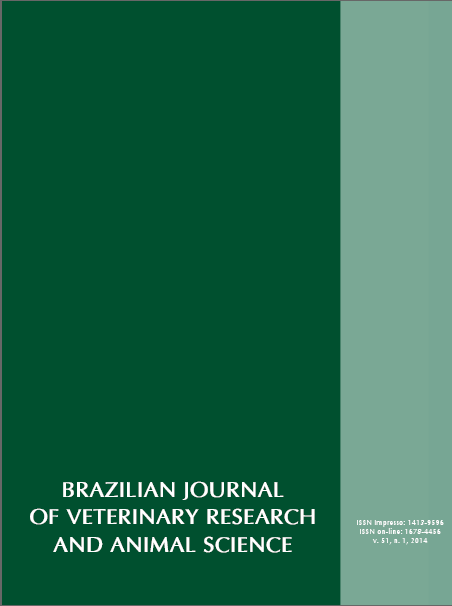Combined effects feeding restriction and flushing on fertility of gilts inseminated at different estrous cycles
DOI:
https://doi.org/10.11606/issn.1678-4456.v50i6p462-467Keywords:
Gilts, Flushing, Food restrictionAbstract
The study evaluated the effect of dietary restriction in prepubertal gilts associated with the use of flushing in the preceding cycle of artificial insemination, 2nd or 3rd estrus on productive performance, number of corpora lutea and fetus, besides the fetus survival rate. A total of 96 gilts were distributed to a completely randomized design with 2x2x2 factorial arrangement of treatments, consisting of: nutritional strategy, ad libitum or restricted feeding, use or not of flushing in the preceding cycle AI, and time of AI, held on the 2nd or 3rd estrus. The age at which gilts expressed the 1st estrus was not influenced by nutritional strategy, but the body weight and weight gain were higher (P < 0.05) in gilts submitted to ad libitum feeding. No interactions were observed as treatment effect on number of corpora lutea and fetus survival rate. The number of fetuses in females on ad libitum feeding was not influenced by time of AI, but the females feed restriction showed an increase (P < 0.05) in the number of fetuses when inseminated on 3rd estrus. Thus, it is concluded that the use of ad libitum nutritional strategy allows for insemination forward 2nd estrus without reducing the number of fetuses, reducing the non-productive days gilt. However, this strategy reduces the rate of fetal survival until day 35 of gestation.Downloads
Downloads
Published
2013-12-09
Issue
Section
ARTICLES
License
The journal content is authorized under the Creative Commons BY-NC-SA license (summary of the license: https://
How to Cite
1.
Muniz A, Ravagnani GM, Martins SMMK, Andrade AFC de, Moretti A de S. Combined effects feeding restriction and flushing on fertility of gilts inseminated at different estrous cycles. Braz. J. Vet. Res. Anim. Sci. [Internet]. 2013 Dec. 9 [cited 2025 Apr. 6];50(6):462-7. Available from: https://www.revistas.usp.br/bjvras/article/view/81072





